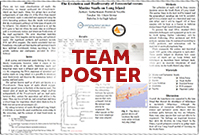

- Program:
- Barcode Long Island
- Year:
- 2022-23
- Research Topic:
- Biodiversity & trade
- Taxonomic Group Studied:
- Lichen
Project:
The Effect of Air Pollution from E.F. Barrett Power Plant on Lichen Growth and Diversity
- Students:
- Gabrielle Geller, Emilia Perri, Clarissa Charpentier
- School:
- Lynbrook Senior High School, Nassau
- Mentors:
- Kathleen McAuley
Abstract:
Sensitive Lichen species develop structural changes in response to air pollution including bleaching, reduced photosynthesis & growth, discoloration, & mortality. Air pollutants that affect lichen growth are mainly nitrogen & sulfur dioxide. Nitrogen dioxide pollution comes from burning fossil fuels, car, truck, and bus emissions, & power plants. Air pollution is the chief factor in the reduction of species diversity over long distances. Crustose lichens are flat & have the least amount of surface area for respiring, so they are the most tolerant to air pollution. On Long Island, B. polyspora reflects extreme intolerance to air pollution. Fruticose and foliose lichens are more severely damaged than crustose species, also indicating their intolerance. The species that are present in a location with high air pollution can tell us about the tolerance of these species, & about the air quality in that location.

